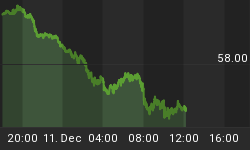
Perhaps it's the change in seasons - the cool, dry, early autumn air. Or maybe it's just thinking about the Chairman, and the echoes and reflexes of a market, whose zeitgeist grows louder and more bewildered with each choreographed intervention.
Climate change is here, and I once again sense that palpable and lucid - confusion.
Granted, the markets were always bi-polar - even before the Fed started fluxing its capacitor and attempting to bend the continuum. Bewildering though - in recent years, as we have travelled between the carrots and the sticks, and the parallel universes of Europe and the US - that the markets have become downright schizophrenic to the long term and material impact of QE on the equity, commodity and currency markets. As traders, many of us try and hold several perspectives in our heads at any one given time. However, the Chairman's influence and practical real-time disruption of market trajectories through the promise, then delivery of QE - has amplified that thought process into an almost dissonant chorus of outcomes and kinetics.
A lucid confusion, and if you're searching for one barometer, look no further than the chart of gold over the past decade - but that's another story for another time.
While I am impressed with the Chairman's conviction and fortitude in persisting down a path he clearly defined over a decade ago, I find myself with increased skepticism towards many investors perception of its perennial influence - that closely correlates with my comparative work with trends, analogs and historical market data. What many in the financial punditry will describe as an obvious cause and effect - is more than a little bit nuanced when you step back and gauge the broader environments the Chairman has created monetary policy in.
During the prior salvos of QE in 2008, 2009 and 2010 - the commodity cycle was still cresting, thus, emerging global growth remained elastic; China was growing at a double digit pace - and the US dollar was still searching for a long-term low.
Today, my work has suggested that the long-term commodity cycle has crested, growth across both the developed and emerging world economies is turning down, China is slowing rapidly - and the US dollar has found a secular low.
I like to remind myself that it's much easier to rekindle economic growth across the globe, when all that is required is a large shovel, boat and a frothy marketplace. Although commodity inflation has provided the US consumer a painful transition in the pocketbook over the past decade, we likely do not fully appreciate how beneficial that same knife has smoothed the impact of our own financial stumbles - in a world more than ever financially dependent upon the health of the majority.
I suggest we now minimize the academic conventions and transmission mechanisms of QE, and the purported impacts of the intervention playbook penned by the Fed over the past decade. Why? Because now that the central banks have once again responded to the drumbeat of their constituencies, the marketplace will now carry out psychological exams in the face of their monetary proctors. The final results, once the initial anxiety and euphoria abate - will likely uphold the long-standing market tradition of breaking conventional wisdom against the grain.
The commodity markets, that have rallied so fervently this summer in anticipation of another bolus by the Fed, the ECB and the PBC - will need to overcome the notion of "pushing on a string", that was not nearly as applicable in 2010 - as it is today. It is my belief, based on my comparative work with the US dollar, the Australian dollar and the CRB, that the commodity rally ignited this summer will fail - and fail as prominently as the equity markets faired to the aggressive monetary policy regimes enacted by the Fed at the end of 2007.
Back then market psychology quickly pivoted from - "Don't fight the fed!", to "the Fed is pushing on a string!" - almost overnight.
As always - Stay Frosty.


















